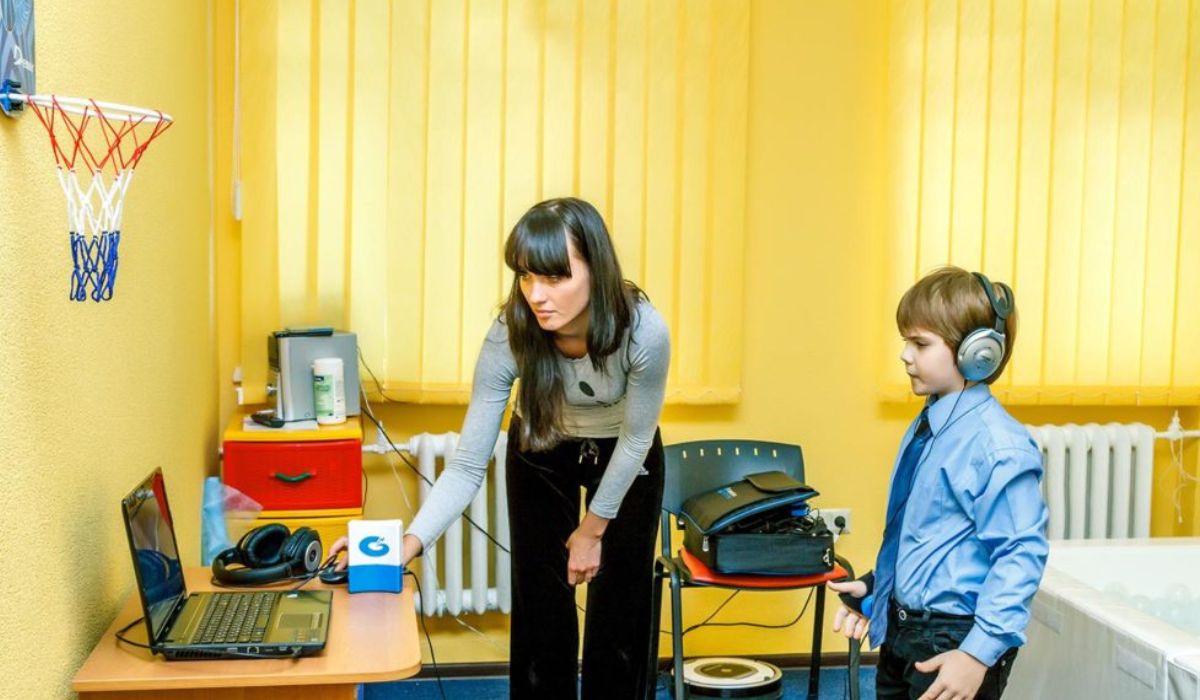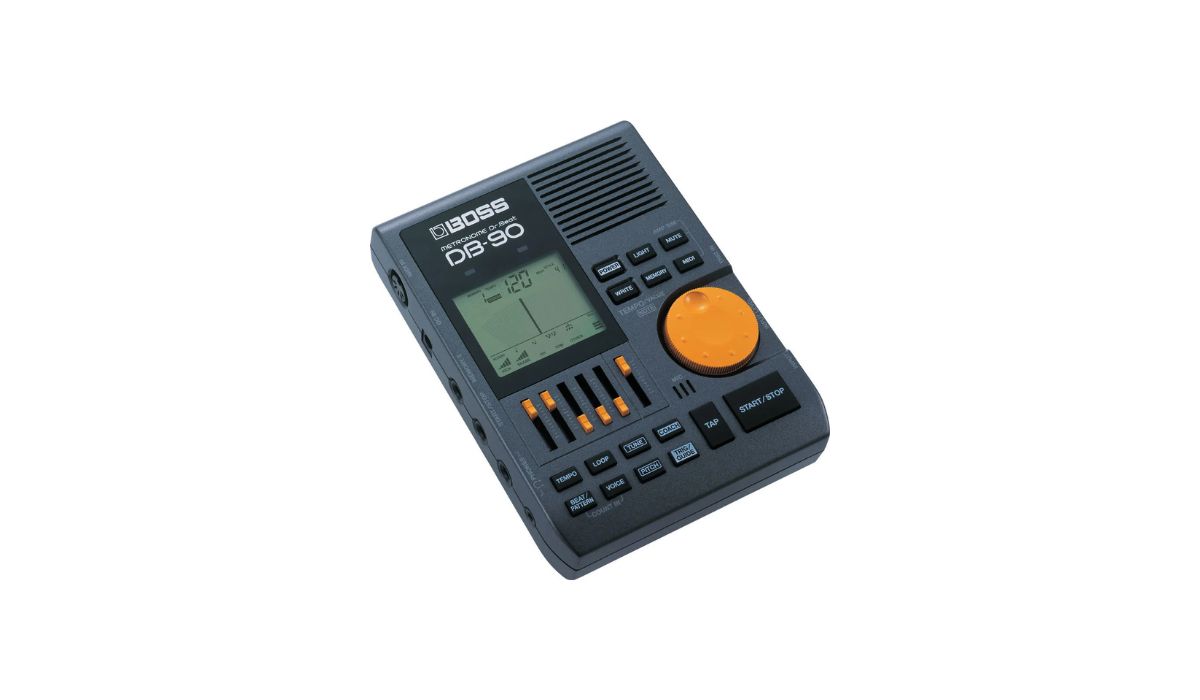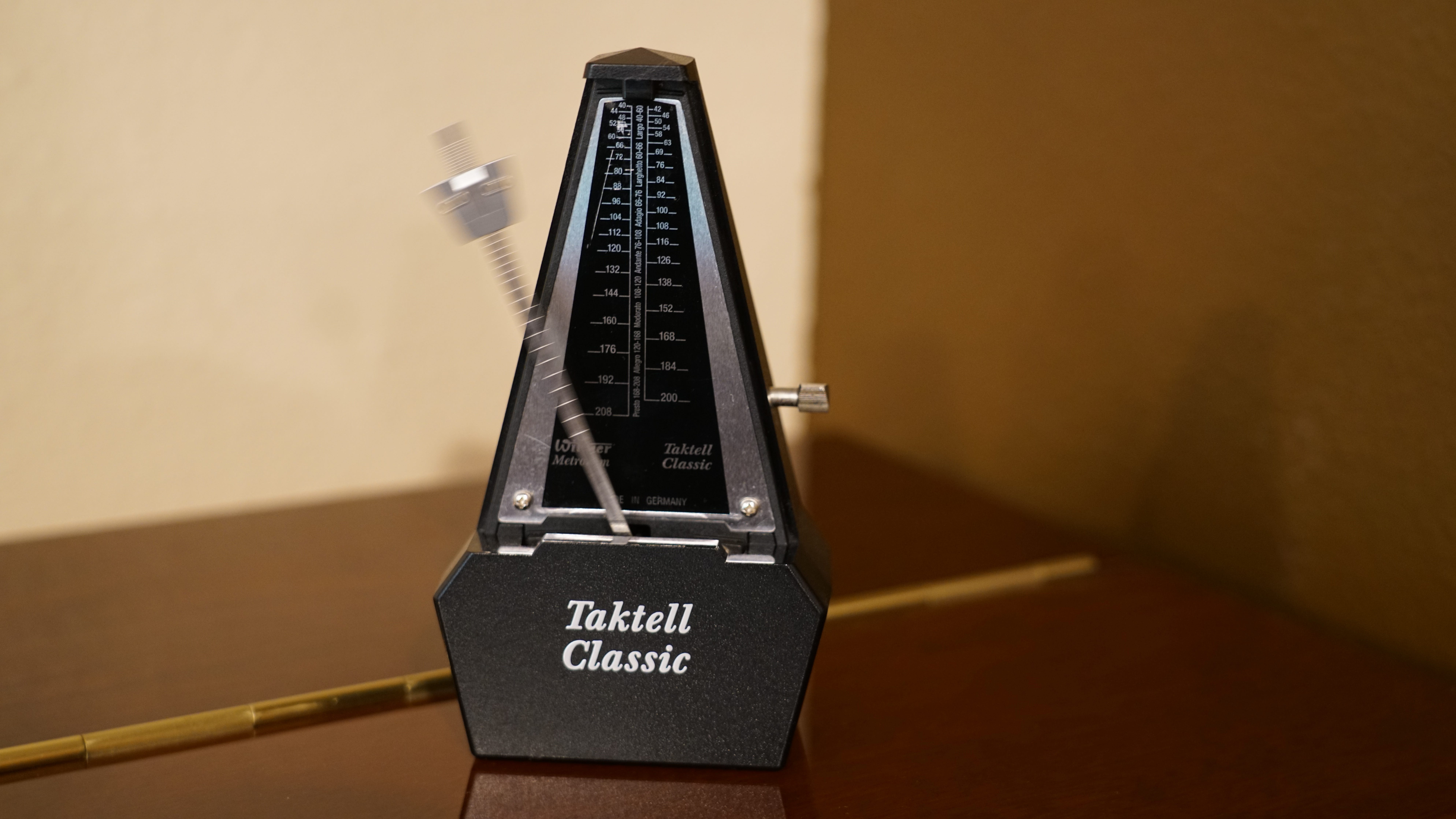Home>Production & Technology>Metronome>What Is Interactive Metronome


Metronome
What Is Interactive Metronome
Published: January 14, 2024
Discover the benefits of the Interactive Metronome and how it can improve your rhythm and timing. Enhance your musical skills with this innovative metronome tool.
(Many of the links in this article redirect to a specific reviewed product. Your purchase of these products through affiliate links helps to generate commission for AudioLover.com, at no extra cost. Learn more)
Table of Contents
Introduction
Have you ever struggled to stay focused or maintain a consistent rhythm? Whether you’re a musician, athlete, or just someone looking to improve cognitive function, you might be interested in an innovative tool called the Interactive Metronome. This cutting-edge technology is designed to enhance timing, attention span, coordination, and overall performance.
In this article, we will explore what Interactive Metronome is, how it works, its benefits, and who can benefit from it. We will also discuss some limitations and important considerations to keep in mind.
Interactive Metronome is a timing and synchronization training program that uses specialized equipment and software to improve the brain’s ability to process and respond to information. It was developed by researchers and therapists who recognized the crucial role that timing plays in various aspects of human performance.
The Interactive Metronome system incorporates auditory and visual cues to guide users in timing their movements to a specific beat. By practicing precise timing and synchronization, individuals can improve their attention, concentration, motor skills, and overall cognitive function.
Through a series of interactive exercises and feedback, Interactive Metronome helps users develop their internal sense of timing and rhythm. This can have far-reaching benefits in domains such as sports, music, speech and language therapy, and even for individuals with learning disabilities or neurological conditions.
Now, let’s dive deeper into how Interactive Metronome works, the advantages it offers, and who can benefit the most from this innovative training program.
What is Interactive Metronome?
Interactive Metronome is a neuro-motor training program that focuses on improving timing, rhythm, and synchronization skills. It is an evidence-based therapy that assists individuals in enhancing their attention, coordination, and cognitive abilities.
Unlike traditional metronomes used in music, the Interactive Metronome is a highly advanced technology that combines auditory and visual cues with motor movements to create a multi-sensory training experience. Users are guided to match their movements precisely to a specific beat, while the system provides real-time feedback on their timing accuracy.
During Interactive Metronome sessions, individuals perform a variety of exercises that involve tasks such as clapping, tapping, or stepping in synchronization with the metronome beat. The program adjusts the tempo and difficulty level based on the user’s performance, making it suitable for people of all ages and abilities.
What sets Interactive Metronome apart from other timing tools is its focus on the internal sense of timing. While external metronomes help musicians keep a steady beat, Interactive Metronome trains the brain to process and respond to precise timing cues internally.
By improving internal timing, individuals can enhance their ability to plan and execute movements accurately, thereby improving attention, concentration, and overall coordination. This can have a positive impact not only on physical activities such as sports and dance but also on cognitive tasks like reading, writing, and problem-solving.
Moreover, Interactive Metronome provides immediate feedback through visual and auditory cues. This feedback allows users to make real-time adjustments to their movements, helping them to gradually refine their timing skills.
The Interactive Metronome program can be customized to address specific needs and goals. Depending on the user’s requirements, the therapy can be tailored for sports performance enhancement, rehabilitation after an injury or stroke, speech and language therapy, or even improving academic performance.
Next, let’s explore how Interactive Metronome works its magic to enhance timing and cognitive abilities.
How does Interactive Metronome work?
Interactive Metronome works by combining precise timing exercises with real-time feedback to improve the brain’s ability to process and respond to information. It engages both the motor and cognitive systems, making it an effective tool for enhancing timing, attention, and coordination.
Here’s a breakdown of how Interactive Metronome works:
- Assessment: Before starting the training, a licensed therapist or trained professional conducts an initial assessment to determine the user’s baseline timing and synchronization abilities. This assessment helps identify specific areas of strength and areas that need improvement.
- Training Sessions: Interactive Metronome training sessions involve a series of interactive exercises that require users to synchronize their movements with specific beats. The exercises are designed to gradually increase in complexity and difficulty, challenging the individual to continuously improve their timing skills.
- Sensory Feedback: During the exercises, the system provides visual and auditory cues to guide the user’s movements. The user is required to perform precise actions, such as clapping or tapping, in synchrony with the metronome beat.
- Real-Time Feedback: The Interactive Metronome system provides immediate feedback on the user’s performance. This feedback allows individuals to see and hear how closely their movements align with the desired timing, giving them the opportunity to make adjustments and improve their accuracy.
- Progress Tracking: Throughout the training program, the system tracks the user’s progress and generates reports that highlight areas of improvement and areas that may need further attention. This data helps the therapist tailor the training to the individual’s specific needs.
The underlying principle of Interactive Metronome is the concept of neuroplasticity, which refers to the brain’s ability to reorganize and form new connections. By engaging in repetitive and precisely timed exercises, the brain forms new neural pathways and strengthens existing ones, resulting in improved timing, attention, and coordination.
The training program typically consists of several sessions, with each session lasting around 45 minutes to an hour. The number of sessions required varies depending on individual goals and progress.
Interactive Metronome can be performed in a clinical setting under the supervision of a trained professional or at home using specialized equipment and software. Remote options are also available, allowing individuals to access the training program from the comfort of their own homes.
Next, let’s explore the various benefits that Interactive Metronome can provide.
Benefits of Interactive Metronome
Interactive Metronome offers a wide range of benefits for individuals of all ages and abilities. By improving timing, attention, and coordination skills, it can have a positive impact on various aspects of an individual’s life. Here are some key benefits of using Interactive Metronome:
- Improved Cognitive Function: Interactive Metronome helps enhance cognitive abilities such as attention, concentration, memory, and problem-solving skills. By improving the brain’s internal sense of timing and synchronization, individuals can more effectively process and respond to information.
- Enhanced Motor Skills: The precise and coordinated movements required in Interactive Metronome training can improve fine motor skills and coordination. This can be particularly beneficial for athletes, musicians, and individuals recovering from injuries or neurological conditions.
- Improved Academic Performance: Interactive Metronome has shown promising results in improving academic performance, particularly in areas such as reading, writing, and mathematical skills. The improved timing and attention gained through this training can translate into better focus and productivity in the classroom.
- Athletic Performance Enhancement: Timing and coordination are essential components of athletic performance. By honing these skills with Interactive Metronome, athletes can improve their speed, agility, precision, and overall performance on the field or court.
- Speech and Language Development: Interactive Metronome has been utilized in speech and language therapy to aid individuals with speech delays, articulation disorders, and language impairments. The rhythmic exercises help improve the timing and coordination of the muscles involved in speech production.
- Enhanced Focus and Attention: Interactive Metronome training requires individuals to maintain focused attention and concentration while synchronizing their movements with the metronome beat. This can have long-lasting effects on improving attention span and reducing impulsivity.
- Emotional Regulation: Research suggests that Interactive Metronome may have a positive impact on emotional regulation. By improving timing and coordination skills, individuals may experience better emotional control and regulation.
It is important to note that Interactive Metronome is not a standalone treatment but is often used in conjunction with other therapies or interventions. The benefits achieved through this training program can be further enhanced when combined with targeted interventions specific to individual needs and goals.
Now let’s explore who can benefit the most from Interactive Metronome.
Who can benefit from Interactive Metronome?
Interactive Metronome is a versatile training program that can benefit individuals of all ages and abilities. Here are some groups of people who can benefit from using Interactive Metronome:
- Athletes: Whether you’re a professional athlete or a weekend warrior, Interactive Metronome can enhance your athletic performance. By improving timing, coordination, and focus, athletes can gain an edge in their sport, improve reaction times, and enhance overall motor skills.
- Musicians: Timing and rhythm are critical for musicians. Interactive Metronome can help musicians improve their sense of timing, synchronization with other instruments, and overall musicality. It can be particularly beneficial for instrumentalists, vocalists, and composers seeking to enhance their performance and composition skills.
- Individuals with ADHD: Attention deficit hyperactivity disorder (ADHD) can affect an individual’s attention span, focus, and impulse control. Interactive Metronome has shown promising results in improving attention and reducing impulsivity in individuals with ADHD, enhancing their overall cognitive function.
- Individuals with Autism Spectrum Disorder: For individuals on the autism spectrum, Interactive Metronome can help improve motor coordination, social interaction, and sensory integration. The structured nature of the training program can enhance individuals’ ability to process and respond to sensory input.
- Individuals with Learning Disabilities: Interactive Metronome can be beneficial for individuals with learning disabilities, including dyslexia, dysgraphia, and auditory processing disorders. By improving timing, attention, and coordination, it can enhance academic performance and learning outcomes.
- Individuals recovering from Stroke or Brain Injury: Stroke survivors and individuals recovering from traumatic brain injuries often experience motor and cognitive deficits. Interactive Metronome can aid in the rehabilitation process, helping to improve motor skills, coordination, and cognitive function.
- Older Adults: Cognitive decline and motor deficits are common in older adults. Interactive Metronome can help improve cognitive function, attention, and coordination in the elderly population, promoting healthy aging and maintaining independence.
It is important to note that while Interactive Metronome can be beneficial for various populations, it is always recommended to consult with a licensed therapist or healthcare professional to determine if it is the right fit for specific individual needs.
Now, let’s discuss some limitations and important considerations of using Interactive Metronome.
Limitations and Considerations
While Interactive Metronome can be a valuable tool for improving timing, attention, and coordination, it is important to be aware of its limitations and consider certain factors before engaging in the training program. Here are some important considerations:
- Individual Variability: The response to Interactive Metronome may vary from person to person. While many individuals experience significant improvements in timing and cognition, results can differ based on factors such as age, baseline abilities, and underlying conditions.
- Professional Guidance: It is recommended to work with a licensed therapist, trained professional, or certified Interactive Metronome provider. These professionals can ensure proper assessment, program implementation, and monitoring to maximize the benefits of the training.
- Individualized Approach: Interactive Metronome should be tailored to individual needs and goals. The program should be customized according to the specific age group, functional abilities, and target areas of improvement to achieve the best outcomes.
- Complementary Interventions: Interactive Metronome is often used as part of a comprehensive treatment plan. It can be combined with other therapies, interventions, or educational strategies to address a variety of needs and goals more effectively.
- Time Commitment: Like any training program, Interactive Metronome requires consistent practice and commitment to see results. It is important to dedicate time to regular sessions to reap the full benefits of the training program.
- Cost and Accessibility: Interactive Metronome may involve costs related to equipment, software, and professional services. Additionally, the availability and accessibility of Interactive Metronome programs may vary depending on geographical location.
- Medical Considerations: Individuals with specific medical conditions should consult with their healthcare provider before engaging in Interactive Metronome training. Some conditions may require special considerations, adjustments, or additional precautions.
It is important to remember that Interactive Metronome is a complementary therapy and should not replace traditional medical interventions or other recommended treatments. It is always advisable to seek guidance from healthcare professionals to determine the suitability and integration of Interactive Metronome into an individual’s overall treatment plan.
Now, let’s conclude our exploration of Interactive Metronome.
Conclusion
Interactive Metronome is a powerful training program that can significantly improve timing, attention, and coordination skills. By engaging in precise and synchronized movements with real-time feedback, individuals can enhance their cognitive function, motor skills, and overall performance.
Whether you’re an athlete looking to gain a competitive edge, a musician aiming to improve your rhythm, or an individual seeking to enhance cognitive abilities, Interactive Metronome offers a versatile and effective solution. It has shown promising results in various populations, including individuals with ADHD, autism spectrum disorder, learning disabilities, stroke survivors, and older adults.
While Interactive Metronome has numerous benefits, it is important to work with licensed therapists or trained professionals to ensure proper assessment, individualization, and monitoring of the training program. Complementary interventions and a commitment to consistent practice are also essential for optimal results.
Lastly, it is crucial to recognize that Interactive Metronome is not a standalone treatment but is often used in conjunction with other therapies or interventions, depending on individual needs and goals. Consulting with healthcare professionals is essential to determine the suitability and integration of Interactive Metronome into a comprehensive treatment plan.
Overall, Interactive Metronome holds great promise in enhancing timing, attention, and coordination skills, ultimately improving the quality of life for individuals across various domains. With its innovative and evidence-based approach, it is revolutionizing the way we train and unlock our full potential.











